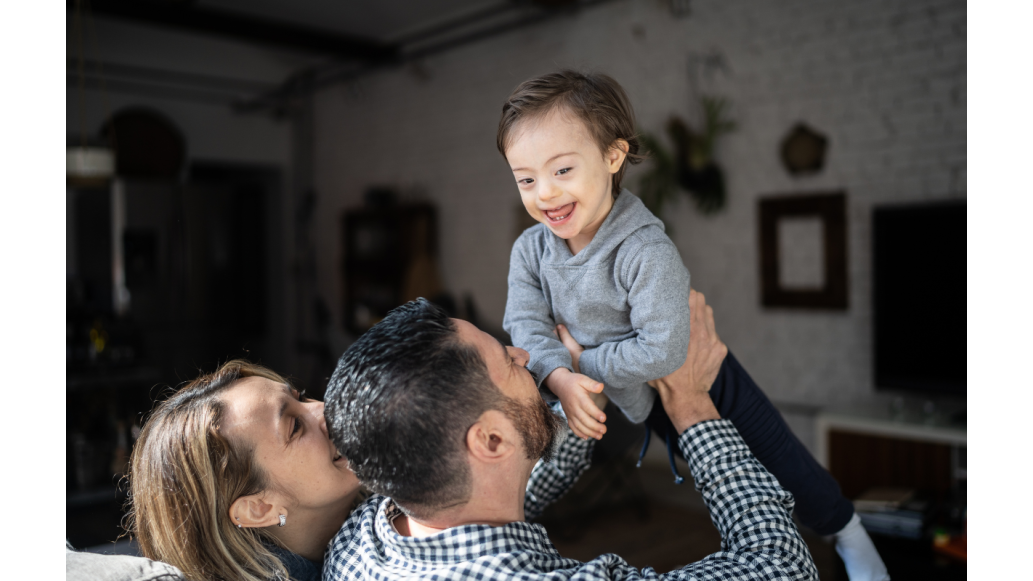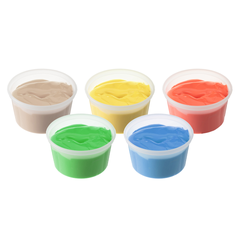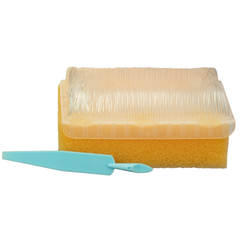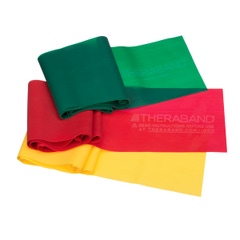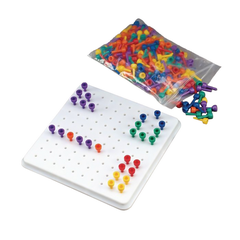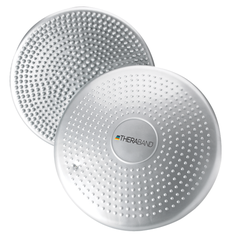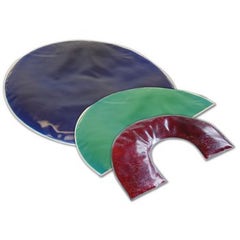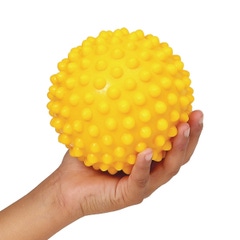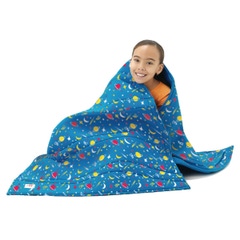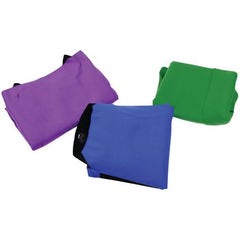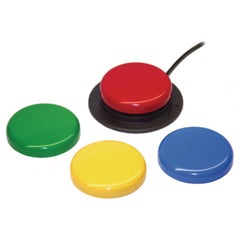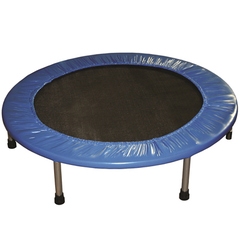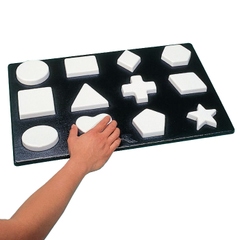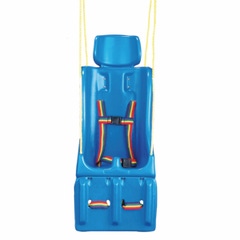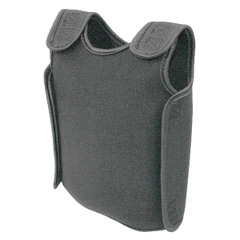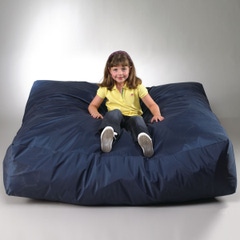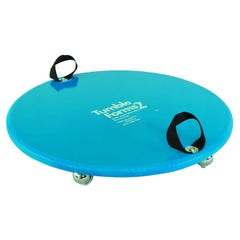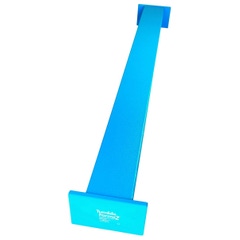If you’re looking for unique gift ideas, you’re in the right place. Chosen to help develop skills like fine and gross motor skills, balance, socialization, and more, these gifts are fun and functional. The variety of gifts mean you can find presents for children with physical disabilities and/or intellectual disabilities. Many of the toys help children with autism meet their sensory needs too.
We’ve organized these gifts by price so you can find the perfect holiday or birthday gift to meet your child’s needs.
Tips When Choosing Gifts for Children With Special Needs
If you’re looking for a gift and you aren’t the parent:
- Talk to the child’s parents/guardians
- The child’s caretakers will know the most about his or her interests, likes/dislikes, and abilities
- Consider the child’s interests
- Do they enjoy animals? Maybe tickets to the zoo would be a hit. It might also be overwhelming, so maybe a book on animals would be better. That’s why step one is so important.
- Do they love Thomas the Train? Elmo? All things Disney? Cups, plates, toys, and clothing with favorite characters are all possible gifts.
- Consider the child’s abilities and special needs.
- Is the child blind? Consider a toy with music or different textures. In contrast, if the child is deaf, toys with lights and bright colors will be a bigger hit than toys with sound. Some autistic children have sensory-seeking or sensory-avoiding behavior, ask them or their parents if there is anything they really dislike (for example, clothes with tags).
- Think about the child’s developmental age, too. While many children who are chronologically nine can ride a bike, play video games, and read books, not all children with special needs can. Some may not have the physical abilities, some may have learning disabilities, some may just be behind their peers developmentally, and some can do all of these activities. It’s important to think about the specific child you are buying for, and not just pick any toy on the shelves.
If you’re looking for a gift and you are the parent:
- You know your child best. You know his or her interests and abilities. You know the things she loves or the things he hates. Choose what your child will enjoy, what works for their developmental age works. The gift should meet their skill level or be slightly challenging, but not so hard that it’s frustrating.
- Make a long list of ideas so you can share them with others who want to buy your child a gift but aren’t sure where to get started. Grandparents, aunts, uncles, and friends will thank you. If you need some additional ideas, ask your child’s therapist or teacher.
- Add a few fun gifts that will encourage skills that your child needs to work on. For example, glitter therapy putty is fun to play with and also helps build hand strength and fine motor skills.
22 Gifts for Children with Special Needs
Organized by price, so you can find the perfect present that fits your budget!
Under $30
Under $60
Under $100
Under $200
Bigger Ticket Items
Under $30
1. Rolyan Therapy Putty
Putty is fun to play with! Stretching, squeezing, twisting, rolling, smashing, pulling, cutting, shaping, molding, and making the possible uses are endless. And while your child plays with therapy putty, like Rolyan Therapy Putty, they are also strengthening their hands and improving their fine motor skills. This makes it an excellent gift for children who are visually impaired or blind or any child who needs to work on their fine motor skills.
The colorful putty comes in six different colors and resistance levels. If you’re looking for a new fun game, hide small plastic toys in the putty. Your child will enjoy working to uncover Batman, Thomas the Train, or whoever their favorite character is and will be working their hands at the same time. Putty is a fun tool that also offers the sensory input some children with autism crave.
2. Sammons Preston Sensory Brushes
The Sensory Brushes make it possible to experience tactile sensations. This brush offers a sense of touch to enhance the tactile experience for any patient. Brush come in a quantity of six.
3. THERABAND Resistance Band Beginner Kit
Less of a toy, but a bit more practical, THERABAND Resistance Bands are great tools for strengthening muscles. This set includes three bands with resistance levels from 3 lbs. to 4.6 lbs.
Perfect for physical therapy, the bands can be used for bicep curls, lateral raises, hip extension and abduction chest presses, and squats, and other upper and lower extremity exercises. Plus, they are easy to store when not in use.
4. Rolyan Energizing Exercise Ball
Exercise balls are fun to bounce or roll on while practicing motor and balance skills. The Rolyan Energizing Exercise Ball is perfect for at home play and can also be used during physical therapy. With a variety of sizes, you can choose the one that's right for your child or teen.
Under $60
5. Sammons Preston Peg Board
Designed for developing fine motor and grasping skills, the brightly colored pegs and board captivate children. The pegs are easy-to-grip plastic pegs that come in six bright colors. Each peg is 3/4" tall and comes 300 to a package. The 6" x 6" plastic pegboard holds up to 100 pegs.
For an added challenge, ask your child to place or stack the pegs in a certain color pattern. Or use plastic tweezers to place the pegs and really work their fine motor skills.
6. Tricky Tree
A construction game to help the child get acquainted with the concept of balance, the Tricky Tree can be a great group activity, or an activity for your special needs child to take on independently. Work together to build a tree by taking turns, or encourage the child to find new ways to build the tree on their own; there are multiple ways to play, explore, and improve fine motor control.
Contains 1 base, 36 pegs, 10 two-pronged joints and 5-three pronged joints. For children age 3 and older.
7. THERABAND Stability Disc
This inflated disc is a great tool to use for sensory input while sitting. The wobble disc offers vestibular input and allows for seated fidgeting, which help some children focus better while doing schoolwork, eating dinner, or watching TV.
8. Weighted Lap Pad
These weighted pillows are designed for children with ADHD or SID (sensory integration disorder). They can be placed on the child’s lap or around their shoulders to offer proprioceptive input and pressure to help the child stay still and focused as well as reduce fidgeting, the deep pressure lap pad helps users feel grounded while sitting. It can be used when traveling in a car, school bus, or any chair.
Under $100
9. Tactile Sensory Ball
If your child needs to improve their hand-eye coordination consider this toy. The bright yellow tactile sensory ball offers sensory input during play.
Choose the 4" ball for a size that's perfect for little hands to hold and roll. The larger 8.5" ball is easier for children with poor coordination to catch.
10. Tumble Forms 2 Weighted Blankets
If your child prefers weight on their full body, a calming weighted blanket might be a better gift. The proprioceptive weight helps many children with autism, ADHD, SID, sensory processing disorder, and other special needs stay calm as they reduce stress, increase focus, and help your child stay grounded. Choose between a small or large blanket and then pick a weight set (sets of four weights, either ½, 1, or 2 lbs.).
If your child will be using the weighted aid during activities, like homework, a weighted vest might be a better option because it leaves their hands free.
11. Snug Hug
Some children find pressure more soothing than weight. The Snug Hug Sensory Solution combines a pressure wrap with a soft fleece blanket. You can also purchase each piece individually.
These are often a good option for children who love the sensation of being hugged or squished. The pressure may help reduce the child’s response to stimulus that is causing frustration or anxiety. The Snug Hug’s proprioceptive input means that it might be a good choice for children with autism or ADHD.
Under $200
12. Jelly Bean Twist Adaptive Button Switch
Limited mobility or coordination can make it difficult for your child to play with their favorite toys independently. A large button switch, like the Jelly Bean Twist, lets your child control battery-operated toys or toys that plug in. It activates no matter where the switch is touched.
Your child can choose the button color they like best, thanks to the removable switch tops (red, green, yellow, and blue). Battery-operated toys require a Battery Adaptor/Interrupter while electrical devices require a Powerlink 4 for use.
13. Mini Trampoline
If your child has a lot of energy and needs vestibular input, a Mini Trampoline could be the perfect gift. Your eager jumper can enjoy heavy work and use up some energy with this ‘nap maker’. The mini trampoline is a great outlet for energy on rainy nights, before bed, or anytime your little one would like to do some jumping.
Older larger children may enjoy some of our other trampoline options. This exercisel trampoline has a 250 pound weight limit.
14. Rolyan Complex Form Board
The Rolyan Complex Form Board has 12 shapes for position in space, shape recognition and sequencing as well as teaching compensatory techniques for loss of visual field. This board can help children improve their spatial skills.
Your child can even create their own patterns. All you need is blank paper and a pencil. Your child can trace the shapes to create random new patterns or work on creating a new image, building their fine motor skills and their imagination at the same time.
15. Special High Back Swing Seat
Adaptive swings allow children who need extra support and body positioning enjoy swinging. This high back swing can be attached to an indoor or outdoor swing frame (not included) allowing it to be used inside on rainy days or added to an existing swing set. Snap buckles hold the child in place for safety during use.
When purchasing, you can choose to buy a headrest or leg extension for the seat for extra support. Available in two sizes (children and teens), you can choose a seat with or without a pommel to fit your child’s needs. It can be used for swing therapy for children with sensory integration issues or sensory processing disorders, and those that need vestibular input.
16. Sensory Pressure Vest
This non-weighted deep pressure vest helps calm children with autism, ADD, SID and ADHD. The vest applies constant pressure to the trunk helping children cope with anxiety, prevent sensory overload, decrease restlessness, and improve concentration and focus. It can be worn at school, while doing homework, in stressful situations, or in crowded, over-stimulating environments.
17. Crash Pad
If you have a child who likes jumping on the bed or crashing onto couches, protect your child and your furniture with this Crash Pad. Packed with foam and covered in rip-stop nylon, the pad is designed to withstand jumping, bouncing, tumbling, and crashing while reducing your child’s risk of injury. It’s the perfect tool for trying new walking, motor planning and balance activities by offering a safe place to land.
The comfy pad can also be used as a large bean bag for cuddling up to read, rest, sit, relax, or cuddle. Choose between two different sizes, both of which can be wiped clean and disinfected.
18. Pop-Up Tunnel
Tunnels make working on crawling skills more fun! It builds gross motor skills and strengthens core muscles. A tunnel can also be used as a quiet hideaway for children who are sensory-sensitive. Multiple tunnels can be combined to create a longer tunnel. The collapsible tunnel is easy to store or take for on-the-go use.
Bigger Ticket Items
19. Spin Disc
This Spin Disc is sure to be a favorite toy for children who crave movement or are sensory seeking. Your child can sit, kneel, or lie down on the large disc (26”W x 24”L) for spinning fun. The disc offers 360° rotary movement and can be used indoors or outdoors. Work on balance, coordination, or gross motor skills using this disc with your child.
This toy would make a great gift for a child with SPD (sensory processing disorder) or autism who crave movement. Just a little upper body movement/leaning will rotate the disc giving your child the vestibular input that they need. It’s a great toy that can be shared with siblings or friends, with a weight capacity of 125 pounds.
20. LadyBug Corner Chair
The LadyBug Corner chair is a fun, cute, and comfortable positioning system for small children that facilitates upright sitting and head control; it helps to protract the shoulders so that the arms can come forward to function in midline. The corner chair back support moves to adjust the seat depth so that the child can be positioned in either a long leg or conventional sitting position. The chair comes complete with an H-Strap harness, removable abductor, and melamine tray.
21. Tumble Forms 2 Scooter
Scooters have always been a favorite toy in gym class. They are also used in physical and occupational therapy. Fun for kids, the boards help build gross motor skills and core strength. Kids can scoot while lying on their belly or sitting cross-legged on the board. They can be used for at-home therapy, if recommended by your therapist.
Scooters can also be used for sensory input. They give vestibular input to children who seek sensory input. The boards can also be used to work on sensory integration skills in children who are sensitive to movement.
Looking for ways to get started? Your child can get started by doing timed races on the scooter board. They can also lay on the board and scoot from one location to pick up a puzzle piece to another location to put it together as part of the puzzle. The puzzle activity works fine and gross motor skills at the same time.
Or have your child sit on the board and scoot around collecting stuffed animals placed throughout the room to deliver them to another location (like a box decorated to be the animals’ home). The boards are a great choice for children with sensory processing disorder, ADHD, autism, or physical disabilities.
22. Tumble Forms 2 Balance Beam
A Balance Beam is perfect for perfecting balance skills in children with poor coordination. It's also an excellent "tightrope" for circus performers during pretend play, a fun item to add to an obstacle course, and a great tool for gymnastics practice. This soft beam and wide base make it the perfect learning balance beam for young children.
Wrapping Your Gift & Opening Presents Tips
- Make sure you have batteries for your child’s toys, if needed.
- Assemble the toy beforehand so your child doesn’t need to wait.
- If your child struggles to unwrap gifts, put them in gift bags with a couple pieces of tissue paper instead.
- If it is too stressful or overwhelming for your child to open all of their gifts in one day, spread out the gift opening time (do some on Christmas Eve, throughout Christmas Day, and even the following days if needed or let your child open one gift on each night of Hanukkah)
References
Play Ball. (2019). What to expect. Retrieved from https://bit.ly/2pvgC9w
Medical Disclaimer: The information provided on this site, including text, graphics, images and other material, are for informational purposes only and are not intended to substitute for professional medical advice, diagnosis or treatment. Always seek the advice of your physician or other healthcare professional with any questions or concerns you may have regarding your condition.








 France
France Australia
Australia